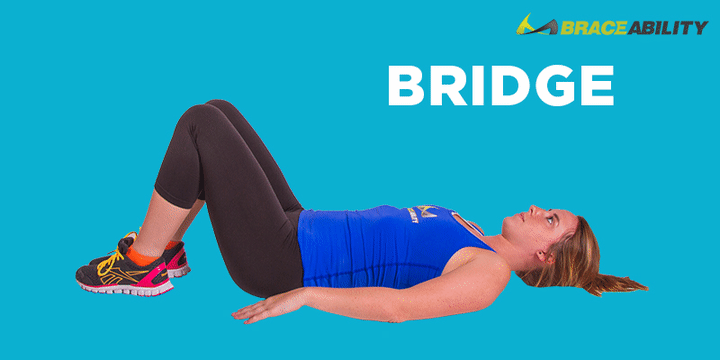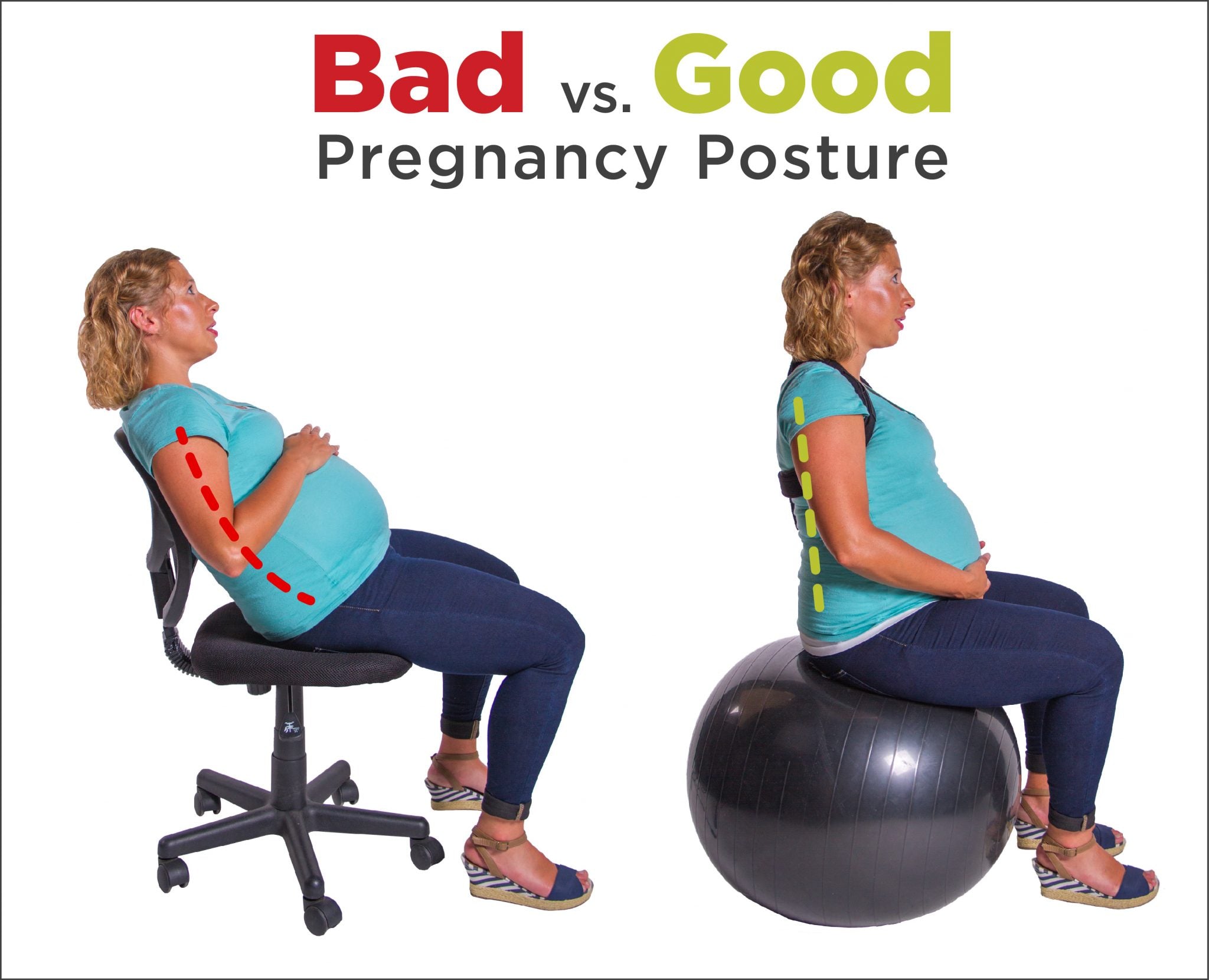Are You Dealing with Tailbone Pain During Pregnancy? 13 Simple Steps You Can Take for Relief
Toward the end of my first trimester, I began to experience an unexpected symptom—low-back pain—more specifically, an aching to sharp pain that seemed to radiate from my tailbone. I did know that low-back pain is common during pregnancy… I have seen many an expecting mother get out of a chair clutching her back. But I did not expect this particular symptom to set in before I even had an Instagram-worthy bump.
What’s Causing the Ache in My Tailbone?
I had always assumed that the culprit for low-back pain during pregnancy was a combination of the weight gain, poor posture and the pregnant-lady waddle. While these factors certainly contribute to low-back pain later in pregnancy, other factors also come into play— particularly regarding early-onset pain.
Tailbone discomfort is yet another symptom for which you can thank hormones. The hormones relaxin and estrogen that are released during the first trimester (yes, that early) make the ligaments throughout your body looser and more flexible, particularly in the pelvic area. This allows space for your baby to grow and enables you to give birth to him or her.
While this is great for baby, it can be tough for momma, as it makes it easier for the hips and tailbone, which are typically more stationary joints, to slip out of alignment or move farther than they should, causing pain. Those experiencing pain that is more localized in the hips may be dealing with an overly mobile sacroiliac (SI) joint—the place where the base of the spine and the bones of the pelvis meet. (Learn more about SI joint pain during pregnancy.)
Those whose pain is centered toward the midpoint of the low-back/upper buttocks are likely dealing with a tailbone (coccyx) that is overly mobile and/or out of alignment.
As your pregnancy progresses, the growing baby can actually press against the spine and tailbone, which happen to be located right behind the uterus. This pressure can cause issues with the discs of the spine and possibly pressure the sciatic nerve, causing sharp, knife-like pain to shoot down the butt, legs and thighs. Around 1% of expecting mothers are lucky enough to experience this.
In addition, some of the aforementioned factors like added pounds and poor posture can increase stress on the tissues of the pelvis and low-back later on in pregnancy.
The good news is that there are steps you can take to ease or in a best-case scenario even eliminate the pain in your tailbone or lower back. Self-care measures basically eliminated my pain and I was lucky enough not to experience a recurrence late in pregnancy (don't hate me!).
13 Ways to Ease Tailbone Pain During Pregnancy
There are many steps one can take to relieve pain in the tailbone during pregnancy, many of which are easy to incorporate into one’s life.
-
Sleep on your left side (better for circulation and digestion) with a pillow between your knees.
This made a huge difference with my discomfort. As my pregnancy progressed, the longer pillow I used also supported my growing belly.

-
Change positions often.
Sitting seemed to aggravate my back pain. Thankfully, my job allows me the flexibility to work from home for a few hours each morning. While there, I work at a standing workstation (AKA, a taller TV stand with two computer monitors). Online, you can find many more legitimate standing workstations for sale as well as instructions on how to construct one. While at the office, I am bound to a seat. Making a conscious effort to get up and move around, whether making a trip to the bathroom or to chat with a coworker every hour or two made a huge difference as to my comfort level.
-
Exercise regularly.
In a similar vein, try to get in at least 30 minutes of exercise each day. Listen to your body and your doctor regarding what activities you can safely do. If you have access to a pool, swimming is one of the best workouts for pregnant women. Brisk walking is another form of exercise that limits stress on the back and encourages a good pelvic movement that eases sore muscles. I was quite active before my pregnancy and was able to continue running, biking (stationary bike), practicing yoga, weightlifting and doing modified CrossFit workouts through my second trimester and well into the third. What style of workout I was doing each day was very much impacted by my level of pain—jerky motions should be avoided when you are dealing with back and tailbone pain.
-
Perform targeted exercises and stretches.
Besides general exercise, there are also specific stretches and exercises that can stabilize and ease stress on the low back and pelvic region. YouTube is filled with pre-natal yoga videos aimed at relieving such pain and getting the body ready for birth. Poses such as cat-cow, torso twists, bridge and downward-facing dog are a few examples of ones that can help. My midwife also recommended that I assume a squat position several times a day with my low-back pressed flat against the wall. This along with cat-cow pose was particularly helpful for me.

-
Avoid excess weight gain.
Nobody wants to hear this when pregnant, but indulging every craving is unwise for both you and the baby. Gaining more than what your doctor recommends can increase strain on the lower back and other tissues of the body and compound posture problems. Doing so can also bulk-up your little one, making delivery more challenging.
-
Wear a maternity belt.
Wearing a maternity back brace can help carry the weight you are supposed to gain. Such maternity support belts take some of the burdens off the low back by lifting the belly and adding a layer of support. Wearing one can also improve your posture and reduce fatigue. Such slings are most effective when used from the end of the second trimester onward.

-
Sit up straight!
Overarching the low back or slumping forward are all too tempting when you’re expecting, but doing so can take a toll on the lumbar spine and related tissues. Proper posture involves sitting upright with your core engaged, feet flat on the ground, the back just slightly curved and the neck straight. Need some help with this? Sitting on an exercise ball and/or using a posture brace are great aids.

-
Pay attention to your wardrobe.
High heels are a big no-no for those dealing with pain in the tailbone. Such shoes shift one’s center of gravity forward, straining the back. While some days I was more than happy to slip my feet into comfy flats, there have certainly been other times when my ego demanded that I wear the less sensible heels. Believe me, your back will thank you if you stick to the supportive shoes. Another pregnancy fashion caveat for those dealing with tailbone pain is to avoid tight clothing, especially pants. The added pressure can aggravate the tailbone. Embrace the changes your body is going through and those pregnancy pants!
-
Massage the tailbone area.
Sign me up, right? While I asked my husband to massage my tailbone area several times each day during the worst of my discomfort, this really brought only limited, short-term relief. It may be well worth the time and money to see a professional such as a physiotherapist or chiropractor who knows what he or she is doing.
-
See a chiropractor.
A chiropractor can make adjustments to your pelvic and tailbone area to improve imbalances and misalignment that are causing you pain. As I mentioned earlier, my discomfort went away after following a number of self-care measures. But several of my friends who were not so lucky swore by the adjustments they received every few weeks. One of the midwives I see recently told me that such adjustments toward the end of pregnancy can also give the baby a bit more space within the pelvis, improving his or her positioning for labor and delivery. If possible, try to see a chiropractor who specializes in prenatal care or women’s health.
-
Use heat.
Taking a warm bath or applying a heating pad or warm compress to the low back can loosen up tight tissues and soothe the pain. Just make sure that you are climbing into a tub filled with warm water that is not too hot for baby.
-
Avoid heavy lifting.
Lifting something heavy can strain the tissues of the back and the increased laxity of one’s joints and tissues during pregnancy increases the risk of something slipping out of alignment when doing so. And if lifting something is necessary, be sure to use proper form.
-
Encourage regular bowel movements.
Constipation can be an unfortunate side effect of all the hormones flowing through one’s body during pregnancy. Iron supplements can also slow one’s digestive system. And full bowels can worsen one’s tailbone pain. For this and general comfort/health reasons, it is important to drink lots of water, keep active and eat foods high in fiber to “keep things moving.”














